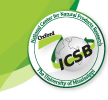Document Type
Oral Presentation
Location
Oxford Convention Center, 102 Ed Perry Boulevard Oxford, MS 38655
Event Website
https://www.oxfordicsb.org/
Start Date
25-4-2023 2:30 PM
Description
Boswellia serrata extract (BSE) is used in dietary supplements for its anti-inflammatory properties. There are reports in the scientific literature that BSE has the potential to inhibit CYP450 enzymes. We have shown that sandwich-cultured human hepatocytes (SCHH) are an excellent model for predicting clinically relevant botanical-drug interactions (BDI) since they integrate metabolism and transport. When using SCHH the BDI potential with BSE appears low; however, our previous work did not include an assessment of CYP450 induction potential. We present an intrinsic clearance approach using SCHH to evaluate an overall net effect (inhibition and induction) of BDI potential with BSE. SCHH (BioIVT) were incubated for 72 hr with BSE (Boswellin®Super, Sabinsa Corp) concentrations ranging from 0.04 to 30 μg/mL, 0.1% DMSO, 25 μM Flumazenil, 50 μM Omeprazole, 1000 μM Phenobarbital, 20 μM Rifampicin and 20 μg/mL St. John’s wort. Enzyme induction was assessed by activity and mRNA for CYP1A2, CYP2B6, and CYP3A4. No induction in either enzyme activity or mRNA was observed for CYP1A2 or CYP2B6 at any tested concentration of BSE. CYP3A induction was observed with BSE at 30 μg/mL based on CYP3A activity and CYP3A4 induction was observed with BSE at 10 μg/mL based on CYP3A4 mRNA. The calculated EC50 (μg/mL) was 13.16 ±1.86 and Emax (fold over control) was 25.98 ±1.98. Metabolic intrinsic clearance of CYP2C9 and CYP3A4/5 was assessed in SCHH following 72 h treatment with 10 μg/mL BSE, 0.1% DMSO, 10 μM Rifampicin, or 20 μg/mL St. John’s wort. After 72 hr treatment, cells were then treated with clinically relevant probe drugs; 25 μM Diclofenac (CYP2C9) and 10 μM Midazolam (CYP3A4/5) and disappearance determined at 1, 2, and 4 hr post-treatment. Diclofenac clearance was decreased 1.27-fold by treatment with BSE indicating a slight inhibition potential of CYP2C9. Midazolam clearance was increased by 0.62-fold by treatment with BSE indicating a slight induction potential of CYP3A4/5. These findings would indicate that this BSE would have minimal BDI potential for CYP2C9 and CYP3A4/5 substrates. We believe that this clinically relevant in vitro approach is an appropriate strategy to screen botanical-based mixtures for drug interaction potential as it takes in to account the additive or synergistic effects between phytochemical constituents.
Recommended Citation
Roe, Amy, "Prediction of Clinically Relevant Botanical-Drug Clearance Interactions for Boswellia serrata Extract using Sandwich-Cultured Human Hepatocytes." (2023). Oxford ICSB. 4.
https://egrove.olemiss.edu/icsb/2023_ICSB/schedule/4
Publication Date
April 2023
Accessibility Status
Searchable text
Included in
Prediction of Clinically Relevant Botanical-Drug Clearance Interactions for Boswellia serrata Extract using Sandwich-Cultured Human Hepatocytes.
Oxford Convention Center, 102 Ed Perry Boulevard Oxford, MS 38655
Boswellia serrata extract (BSE) is used in dietary supplements for its anti-inflammatory properties. There are reports in the scientific literature that BSE has the potential to inhibit CYP450 enzymes. We have shown that sandwich-cultured human hepatocytes (SCHH) are an excellent model for predicting clinically relevant botanical-drug interactions (BDI) since they integrate metabolism and transport. When using SCHH the BDI potential with BSE appears low; however, our previous work did not include an assessment of CYP450 induction potential. We present an intrinsic clearance approach using SCHH to evaluate an overall net effect (inhibition and induction) of BDI potential with BSE. SCHH (BioIVT) were incubated for 72 hr with BSE (Boswellin®Super, Sabinsa Corp) concentrations ranging from 0.04 to 30 μg/mL, 0.1% DMSO, 25 μM Flumazenil, 50 μM Omeprazole, 1000 μM Phenobarbital, 20 μM Rifampicin and 20 μg/mL St. John’s wort. Enzyme induction was assessed by activity and mRNA for CYP1A2, CYP2B6, and CYP3A4. No induction in either enzyme activity or mRNA was observed for CYP1A2 or CYP2B6 at any tested concentration of BSE. CYP3A induction was observed with BSE at 30 μg/mL based on CYP3A activity and CYP3A4 induction was observed with BSE at 10 μg/mL based on CYP3A4 mRNA. The calculated EC50 (μg/mL) was 13.16 ±1.86 and Emax (fold over control) was 25.98 ±1.98. Metabolic intrinsic clearance of CYP2C9 and CYP3A4/5 was assessed in SCHH following 72 h treatment with 10 μg/mL BSE, 0.1% DMSO, 10 μM Rifampicin, or 20 μg/mL St. John’s wort. After 72 hr treatment, cells were then treated with clinically relevant probe drugs; 25 μM Diclofenac (CYP2C9) and 10 μM Midazolam (CYP3A4/5) and disappearance determined at 1, 2, and 4 hr post-treatment. Diclofenac clearance was decreased 1.27-fold by treatment with BSE indicating a slight inhibition potential of CYP2C9. Midazolam clearance was increased by 0.62-fold by treatment with BSE indicating a slight induction potential of CYP3A4/5. These findings would indicate that this BSE would have minimal BDI potential for CYP2C9 and CYP3A4/5 substrates. We believe that this clinically relevant in vitro approach is an appropriate strategy to screen botanical-based mixtures for drug interaction potential as it takes in to account the additive or synergistic effects between phytochemical constituents.
https://egrove.olemiss.edu/icsb/2023_ICSB/schedule/4

